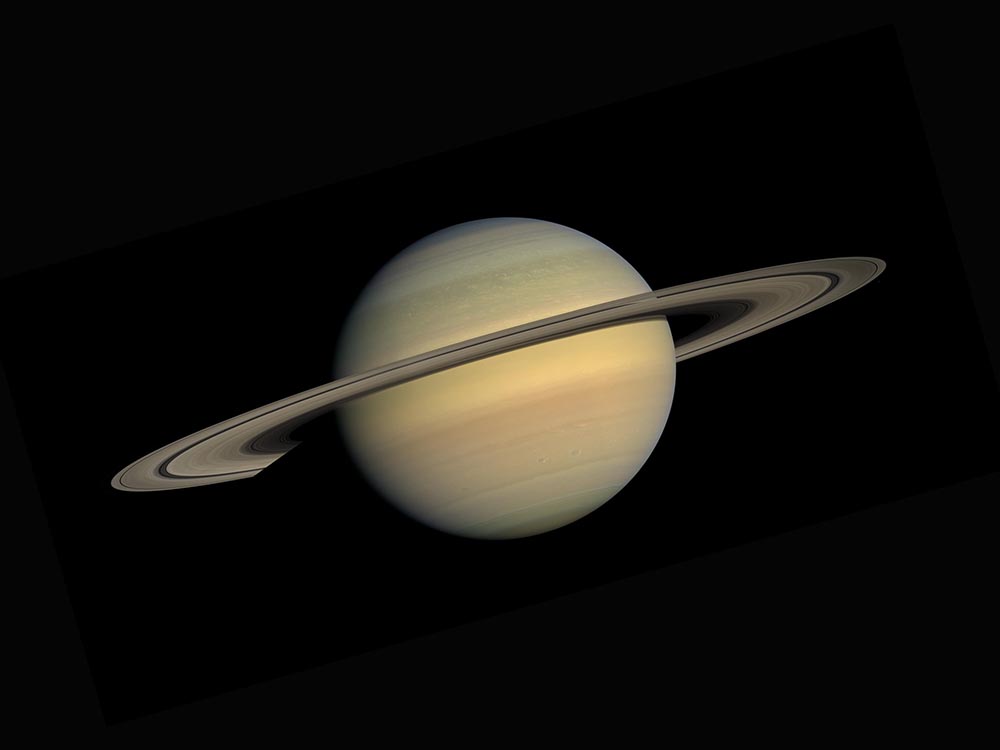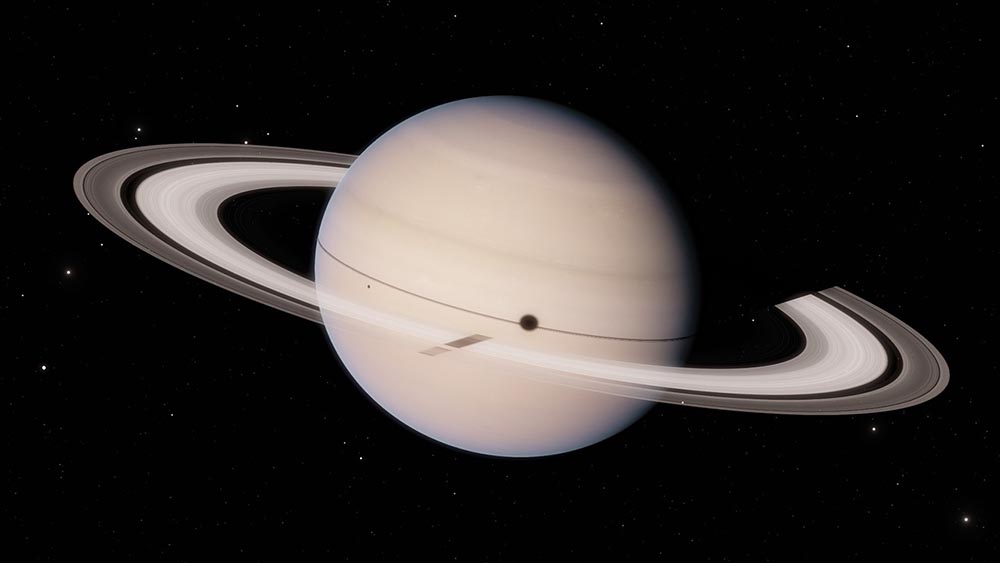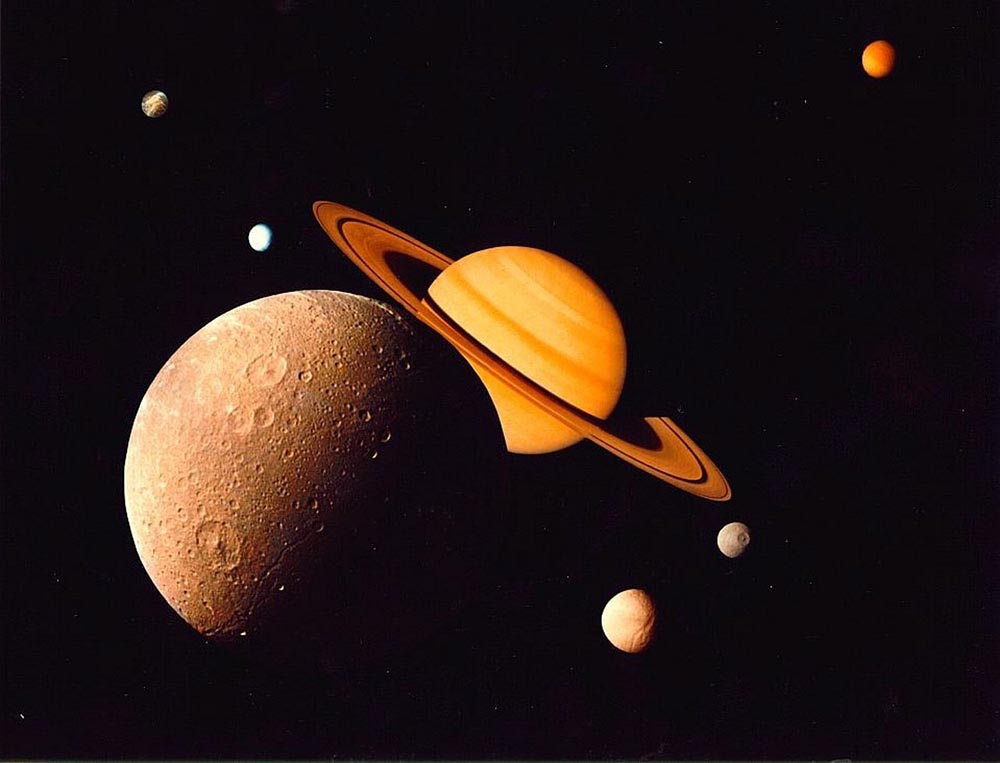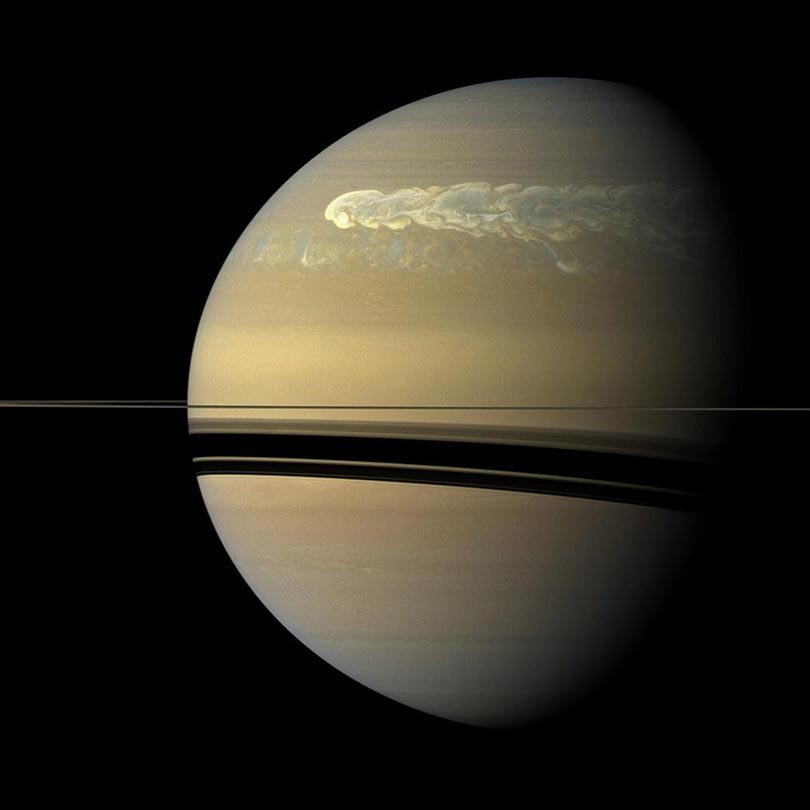10 Interesting Facts About Saturn You Never Knew (2024 Updates)
Last Updated on

The sixth planet from the Sun is a special place in our solar system. Saturn is known for its famous rings, large size, and gaseous climate, which can be observed right here on Earth. You can even see it with the naked eye, although you may mistake it for a massive star in the night sky. Take a look below for 10 facts about Saturn and what makes it so special—you might learn something they didn’t teach you in school!

Top 10 Facts Facts About Saturn
1. On Average, Saturn Is 887 Million Miles From Earth
The estimated distance from Saturn to Earth is 887 million miles or 1.42 billion kilometers. However, this varies depending on the time of year, as its orbit around the sun may change how far away it is. At its closest proximity, Saturn will be only 746 million miles away, or 1.2 billion kilometers. That means that it can fluctuate over 140 million miles during its rotation period around our star. In fact, Saturn is actually 9.5 times farther away than the Earth is relative to the Sun.

2. Saturn Has 7 Rings
The rings of Saturn are not the kind that you wear on your finger—they’re made of ice, rock, and dust. They are even given names or letters for identification, such as “A ring” or “G ring,” but aren’t alphabetically labeled from closest to farthest. Instead, they were given names in order from when they were first discovered. The rings are only about 30 feet (10 meters) tall, but the individual particles can range from dust to the size of a building.
3. Counting Saturn’s Moons Is Hard
It’s a difficult job to estimate how many moons truly orbit Saturn, as there are around 29 objects that have the potential to be considered one, but scientists have yet to give them the official title due to their size and structure.
According to NASA, there are 53 total moons, which is the most of any planet in the solar system. This can increase or decrease over time since the debris inside Saturn’s rings can conglomerate into a new celestial body.
4. Saturn Was Discovered in 1610
Named after the Roman god of wealth and agriculture—also the father of Jupiter—Saturn was first seen through Galileo Galilei’s telescope in the year 1610. He was originally confused about what he saw because the rings protruded off to the sides, deceiving its visual form.
At the time, it was also the farthest planet known to man, as the others weren’t found until astronomers developed new optical technology that added better viewing sharpness and focal range.

5. The Largest Moon is Titan
Titans were considered undying beings in Greek mythology, with their title given by space expert John Herschel in 1847. Yet, it was earlier in the mid-1600s that Christiaan Huygens of the Netherlands first found it.
Titan is actually so enormous that Mercury could fit inside of it, and its atmosphere consists mostly of nitrogen. In 2005, the Huygens space probe landed on the moon’s surface to collect data about the environment. Much like Earth, Titan has lakes, dunes, and other formations. However, the temperatures are incredibly cold so life wouldn’t be able to flourish there.
6. The Cassini-Huygens Space Mission Was Revolutionary
To gather information about Saturn’s climate and conditions, the Cassini-Huygens space exploration project was sent out back in 1997. This spacecraft spent around 13 years studying Saturn’s atmosphere, rings, and satellites. Plus, it took stunning photographs of the environment as well as a solar eclipse.
It was named after Giovanni Domenico Cassini and Christiaan Huygens, two famous astronomers who were the first to discover Saturn’s features and moons. Its inevitable death was on purpose to lower the chance of any biological contamination getting on its moons, which have been thought to be livable.

7. A Day Is Short but a Year Is Long
Out of all the planets in our solar system, Saturn’s mere 10.7-hour day is the one that takes the least amount of time. That’s less than half of Earth’s 24-hour period due to its slow rotation pattern.
On the other hand, a year on Saturn is more than a staggering 10,000 days long. That’s over 29 times as much time to go around the Sun than our own planet. This planet also has seasons as we do, yet they last incredibly lengthy periods of time.
8. It’s the Second-Largest Planet
After the number one spot taken by Jupiter, Saturn has a surface area of 16.5 billion square miles or 83.7 Earths. Not only that, but its radius is almost 34,000 miles long, or 8.5 times our planet’s measurement.
Most of Saturn is made up of gases like helium and hydrogen. Because of the fact that helium is so common in its composition, the ringed planet could actually float in a massive lake of water despite its enormity. This is due to the fact that Saturn is 30% less dense than water.
9. Danger Is Inevitable Here
Since the sixth sphere is composed of gases and liquids, it wouldn’t be feasible for a spacecraft—or let alone a human—to stand on its non-existent terrain. There are some estimations out there that claim a solid center of rock and ice is at its core, but our spacecraft are unable to visit this area because of serious climate limitations. If any of our man-made objects were to dive down into this world, they would quickly succumb to winds that reach beyond 1,000 miles per hour and a high-pressure atmosphere.

10. There Might Be Life on One of Its Moons
Enceladus, a moon orbiting Saturn, could have the potential for life. This is because, under its vast landscape of ice, there may be an entire body of water that holds microscopic organisms. The Cassini probe examined the makeup of this place and found hydrothermal processes present down in some geological vents.
On Earth, there are microorganisms that are able to survive under these same circumstances, so it’s possible that a similar type of life exists on Enceladus.

Conclusion
Saturn has to be one of the most intriguing and distinguishable planets in our solar system. Not only is it immense, but the rings that make it famous are outstanding displays of its history and formation. If you’re trying to decide on what your favorite planet is, this might be near the top of your list. Our 10 interesting facts about Saturn are just the start. It could be worth getting a telescope or even binoculars to get a closer look!
Featured Image Credit: NASA, Unsplash
Table of Contents
- Top 10 Facts Facts About Saturn
- 1. On Average, Saturn Is 887 Million Miles From Earth
- 2. Saturn Has 7 Rings
- 3. Counting Saturn’s Moons Is Hard
- 4. Saturn Was Discovered in 1610
- 5. The Largest Moon is Titan
- 6. The Cassini-Huygens Space Mission Was Revolutionary
- 7. A Day Is Short but a Year Is Long
- 8. It’s the Second-Largest Planet
- 9. Danger Is Inevitable Here
- 10. There Might Be Life on One of Its Moons
- Conclusion
About the Author Robert Sparks
Robert’s obsession with all things optical started early in life, when his optician father would bring home prototypes for Robert to play with. Nowadays, Robert is dedicated to helping others find the right optics for their needs. His hobbies include astronomy, astrophysics, and model building. Originally from Newark, NJ, he resides in Santa Fe, New Mexico, where the nighttime skies are filled with glittering stars.
Related Articles:
15 Crucial Facts About Ultraviolet Rays & the Sun
What Constellation Is Spica In? The Interesting Answer!
10 Interesting Leo Constellation Facts, Myths, and FAQs
15 Interesting Pegasus Constellation Facts, Myths, and FAQs
6 Interesting Sagittarius Constellation Facts, Myths, and FAQs in 2024!
What Are Constellations? Where Did They Come From?
8 Interesting Libra Constellation Facts, Myths, and FAQs
What Is Infrared Radiation? Science-Based Facts & FAQ
